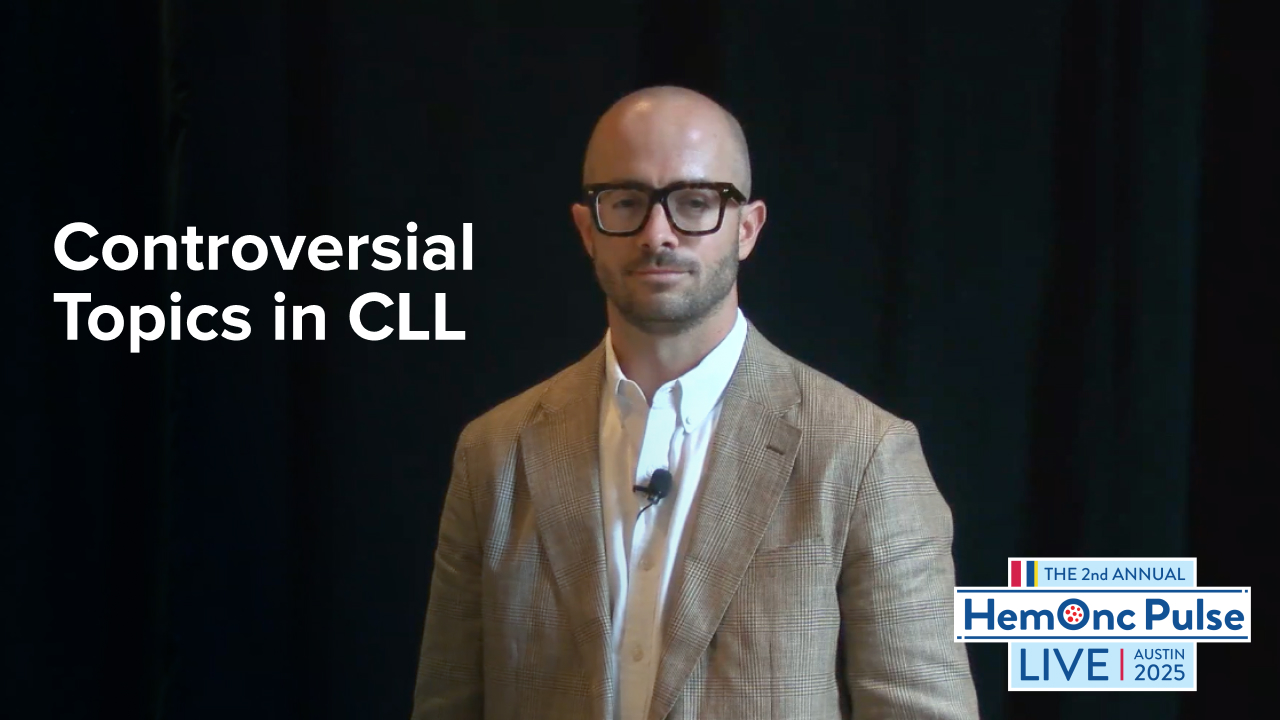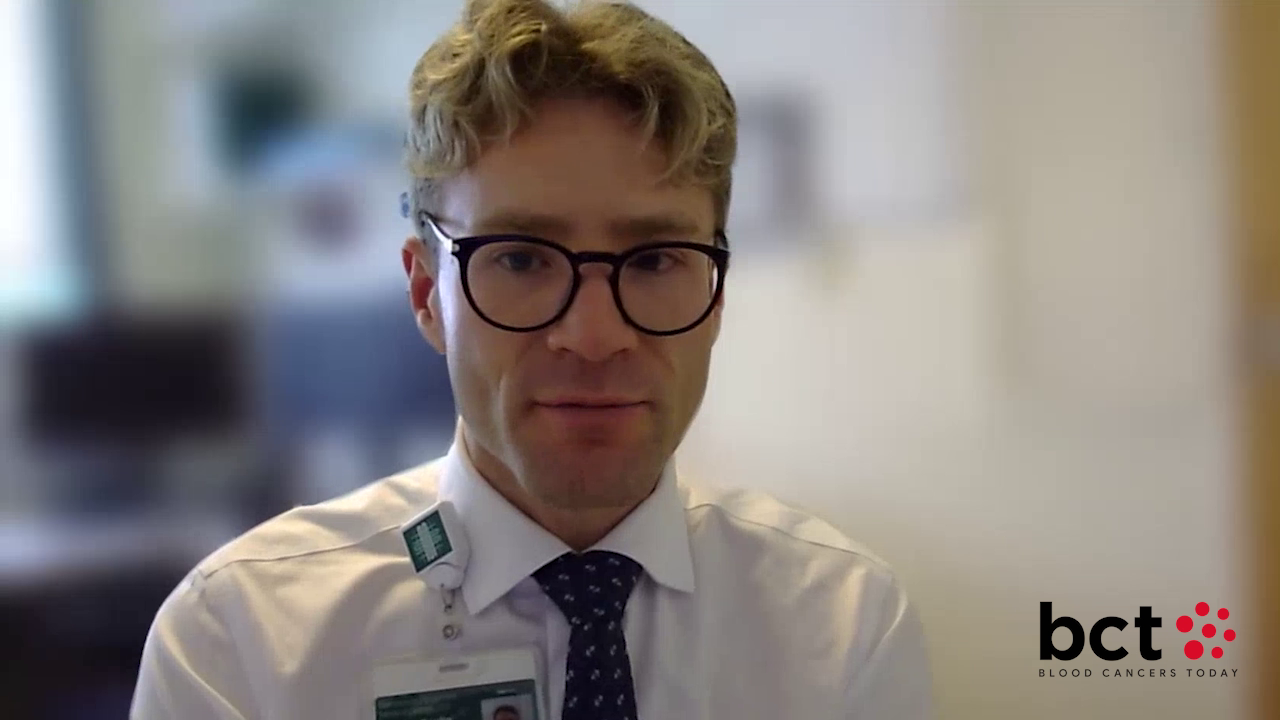Assessing Optimal Combinations for Treatment of Lymphoma
By Blood Cancers Today Staff Writers - Last Updated: April 19, 2023A roundtable discussion, moderated by Kami J. Maddocks, MD, of the James Cancer Hospital, Ohio State University Comprehensive Cancer Center, focused on treatment options for diffuse large B-cell lymphoma (DLBCL) and follicular lymphoma (FL), including novel emerging therapies and treatment sequencing considerations. Dr. Maddocks was joined by a panel that included Pierluigi Porcu, MD; Pamela Blair Allen, MD, MSc; and Jonathan W. Friedberg, MD.
In the next segment, the panel discusses combination therapy options for patients with DLBCL and FL, including regimens that may change the standard of care.
—
Dr. Maddocks: Let’s move on and discuss combination therapies. And I’d like to start again in large-cell, but I’ll ask two things about combination therapies. Is there any data or any combinations you’ve seen that look promising? And then my follow-up would be what combinations would you like to see or do you think have promise?
Dr. Allen: For the frontline setting or for the relapse?
Dr. Maddocks: Let’s start with relapse.
Dr. Friedberg: I think there are a number of attempts to combine the bispecific antibodies with other agents, and some of these are opportune and some of them may be rational combinations, but given our experience with rituximab, where you kind of combine rituximab with anything and there’s some type of synergy, there’s reason to think that that could happen again in the bispecific space. Obviously randomized trials will be needed, but some of these pilots combining novel agents like mosunetuzumab with polatuzumab look very, very attractive and tolerable, and it feels like that’s a drug class that you’re going to be able to easily build combinations. So to me those are some of the more exciting directions in the relapse setting.
Dr. Porcu: And along the same lines, combination with polatuzumab for example and say tafasitamab, that’s another way to look at it, combining. And then at some point whether we’re going to be able to figure out how to combine the BH3 mimetics, venetoclax and that class of drug in the management of relapsed/refractory DLBCL probably some subsets of it with the BTK inhibitors, I think that still remains open. We haven’t quite figured out what patient population to select yet.
Dr. Allen: And the of course multi-agent chemotherapy with polatuzumab is still not to be forgotten for patients that have typically relapsed after more than a year.
Dr. Maddocks: I think when we look at combinations, we have these active agents, some don’t have overlapping toxicity and it’s interesting or exciting to think about combining them, but what do you guys view as some of the challenges in designing trials with combination or with just combining some of these agents? Any thoughts?
Dr. Allen: Sometimes it’s just the trial design itself that when you’re trying to figure out how to escalate one or both agents and how to do it safely, that we still tend to fall into the typical three plus three design or you try and do one and then other and then it requires too many patients. So I think doing novel designs to allow you to try and find not necessarily the dose-limiting toxicity but the lowest effective dose I think is interesting.
Dr. Porcu: When I think about studies looking at combinations, I like to look at studies that enroll multiple different types of lymphomas because I think that is very difficult just before getting started to really figure out whether one particular selective subset, so in B-cell lymphomas or other lymphomas having either multiple cohorts for example that really give you the opportunity to explore signals of efficacy and then expand them. I think that I like those studies.
Dr. Friedberg: I do think another challenge is that the patients now are being treated every which way. So when you have a study in relapsed disease, let’s just say that it could work well in a polatuzumab-refractory patient but not in a patient who’s had tafasitamab before, just hypothetically. Because people have different ways that they’re treating patients in second line and third line, you end up with a very heterogeneous patient population and the number of lines of therapy may not be a good surrogate for who’s likely to be resistant or refractory? So I think in a very thoughtful way you have to have some biologic rationale on either a subset of patients that are going to benefit from a specific combination regimen or like I was saying earlier, if you’re targeting CD19 with something, you probably don’t want them to be refractory to previous CD19-targeted therapy. And I suspect that as we design trials, that’s going to become more and more of a barrier because you’re going to have patients that come in that have seen this and that and trying to figure out which study is appropriate for them may become a challenge.
Dr. Porcu: The selection and eligibility that’s going to be hard.
Dr. Maddocks: Yeah, and if they’ve had one of the agents and then did they respond or not respond because maybe they can still get more of something if they got a full response.
Dr. Porcu: Another issue in DLBCL is the question of refractory disease, what does it mean exactly? It is relapse within 12 months or relapse within six months or is it failure to achieve a response at the end of therapy? There’s not a standardized, I think, way to define that at the moment, and in designing the trials or interpreting the ongoing trials that include some of those populations defined as primary refractory, then it makes it difficult.
Dr. Friedberg: I think that’s one of the reasons why CAR T-cell therapy was both so exciting but also so successful in that those trials were relatively inclusive and as it turned out, even the very heavily pretreated patients or the most refractory patients seem to have a relatively equal chance of responding to CAR T-cell therapy as the patients who were a little bit less heavily treated or a little more responsive in the past. It’s unclear whether our new combinations are going to hit that bar or not, but we probably could learn a lesson from that.
Dr. Allen: And oftentimes, especially with combining novel agents, it’s hard to know if there’s actually additional benefit from adding that second agent that’s much above and beyond in a single-agent therapy in just a phase I or II study.
Dr. Maddocks: Any frontline combinations in large cell that you think are…
Dr. Friedberg: In addition to the polatuzumab that we discussed extensively before, there are a couple of other phase III trials, again trying to look at BTK inhibitor combination in subsets of patients. People are looking at tafasitamab/lenalidomide with or without R-CHOP. It’s hard to know how those studies are going to turn out, but I think given the result that we saw with polatuzumab, we might be optimistic that one of those will become positive and maybe ultimately create new standards. I think the planned and some of them are beginning to be underway trials that are trying to incorporate the bispecifics are maybe the most exciting.
Dr. Maddocks: And do you think frontline trials should start using polatuzumab as the standard arm instead of R-CHOP?
Dr. Allen: I think that’s a tough question. I will say that we have started actually using polatuzumab frontline for our high-risk patients, but I don’t know if you think about the Hodgkin experience, there was also a lot of controversy in terms of brentuximab-AVD being the comparator for a trial and a lot of people didn’t feel like that was warranted, but now I think everyone’s pretty glad that that was the decision. So I think it’s tough because is the way that the trial was designed was for higher-risk patients, so I guess the design of the trial would also have to include that same population.
Dr. Porcu: Personally, I would still like to see a few additional phase III trials using R-CHOP as comparator because to really kind of assess carefully the additional benefit of the investigational arm, that may not be a majority opinion. I don’t think there would be a hesitancy in investigators both in academic centers or people who are participating in trials at more community centers to say that R-CHOP is not. The question is are they a good standard of care? The question is whether for some of those subsets of patients that we discussed, people feel very strongly that using R-CHOP would be inadequate. So to some degree we have the double-hit lymphoma experience where I think almost everyone would feel inappropriate to use R-CHOP, and I don’t know if there’s any subset of DLBCL in the polatuzumab-R-CHOP trial that any here around the table would feel that the same way, so that R-CHOP absolutely is not… What do you think?
Dr. Friedberg: Well I’m probably more with Dr. Allen that if it gets FDA approval, it feels to me like that’s a positive direction. It was a study of over 900 patients, a robust randomized trial that demonstrated superiority, and it’s a regimen as we said earlier, that I don’t think will make it more challenging to build upon. So for those reasons, I would probably think that the polatuzumab-containing combination would be a reasonable control arm, but we’ll have to see how that evolves, and there may be certain subsets of patients where that’s not the case.
Dr. Maddocks: We went a long time without having a positive trial, but now that we’ve had one, I feel like there’s a chance you could see tafasitamab/lenalidomide, R-CHOP, bispecific R-CHOP, and then you might have a menu but then you still don’t know what’s the best one.
Dr. Friedberg: That’s a nice problem to have.
Dr. Maddocks: It is, but then it’s like, well what one should I use in this patient? How about follicular lymphoma? Any combinations that you’ve seen that look really good there that you’d like to see there? Frontline or relapsed?
Dr. Friedberg: I think there are some very early studies that are looking at approaches that use bispecifics upfront in follicular lymphoma. The concept is great, but obviously this is a disease where you need very long follow-up. This is also a disease where our current standard treatment, chemoimmunotherapy, does quite well for most patients. So it’s a challenge to look at a pilot study that looks good with short follow-up and to have any confidence how that’s going to be better. I think that brings us to the RELEVANCE study where the combination of lenalidomide and rituximab looked like it might beat chemoimmunotherapy, and it didn’t. It looked pretty equivalent though, and many people still might view as a positive direction for that disease, but I think it speaks to the challenge in this disease when we’re not good at picking out the high-risk patients upfront and you have to treat a lot of patients to see relatively few events. It’s hard certainly in the upfront setting to be too excited about big changes in the near future.
—






 © 2025 Mashup Media, LLC, a Formedics Property. All Rights Reserved.
© 2025 Mashup Media, LLC, a Formedics Property. All Rights Reserved.